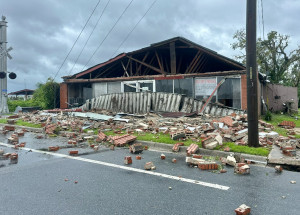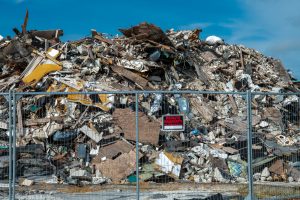As hurricane claims grow
 Homeowners insurance companies continue to adjust their Florida portfolios as Hurricane Ian claims climb another $2 billion in three months, a global reinsurance company says the growing number of coastal residents is driving Florida’s increasingly expensive costs of claims and insurance, plus the debate over a proposed workers’ compensation insurance rate decrease. It’s all in this week’s Property Insurance News.
Homeowners insurance companies continue to adjust their Florida portfolios as Hurricane Ian claims climb another $2 billion in three months, a global reinsurance company says the growing number of coastal residents is driving Florida’s increasingly expensive costs of claims and insurance, plus the debate over a proposed workers’ compensation insurance rate decrease. It’s all in this week’s Property Insurance News.
 Progressive Rebalancing: For the second time in two years, Progressive Insurance/ASI is reducing its Florida exposure. The company recently announced its shedding some high-risk homeowners policies and will discontinue coverage altogether for Dwelling Fire (DP3) policies after it stopped writing new ones in July 2022. The company has made arrangements with reciprocal carrier Loggerhead Insurance to offer replacement homeowners coverage. The Insurance Journal reported 100,000 policies will be eliminated. “We look forward to realizing the benefits of the recent state market reforms while we continue to insure more than 200,000 Floridians and their homes,” the company said in a statement to agents.
Progressive Rebalancing: For the second time in two years, Progressive Insurance/ASI is reducing its Florida exposure. The company recently announced its shedding some high-risk homeowners policies and will discontinue coverage altogether for Dwelling Fire (DP3) policies after it stopped writing new ones in July 2022. The company has made arrangements with reciprocal carrier Loggerhead Insurance to offer replacement homeowners coverage. The Insurance Journal reported 100,000 policies will be eliminated. “We look forward to realizing the benefits of the recent state market reforms while we continue to insure more than 200,000 Floridians and their homes,” the company said in a statement to agents.

The former Bellamy’s Produce in Perry, FL suffered major damage from Hurricane Idalia, August 30, 2023. Courtesy, Evan Bunkers via @EvanBuWX
Idalia Claims: The ongoing Data Call now has total Florida estimated insured losses from August 30’s Hurricane Idalia at $244.6 million on 22,763 claims (up $22 million and almost 2,000 claims from the September 21 report). About 61% of claims are now closed (up from 46%) and maintaining a 3:2 ratio of paid to unpaid claims. Crop losses and other non-homeowners lines make up a quarter of the claims to date. This is part of a four-week Idalia Data Call from regulators, with the next reporting dates Oct. 12, 19, and 26.
The federal government, through FEMA, has an agreement with the Young Lawyers Division of the American Bar and Florida Bar Associations to offer free legal help to low-income disaster survivors who need it. The help includes various insurance claims and repair contractors. It’s part of the existing Disaster Legal Services program, which notes it may only provide advice and assist with cases that will not generate a fee; otherwise, they are supposed to refer survivors to a local lawyer referral service.

A debris pile from Hurricane Ian in Fort Myers, FL, September 19, 2023. Photo by Michael Hopkins
Ian Claims: The recent updated Data Call now has total Florida estimated insured losses from last year’s Cat-4 Hurricane Ian at $18.7 billion on 757,426 claims (an increase of $2 billion and 19,000 claims from the mid-June report). Just over 89% of claims are now closed with 71% with payment and 29% without payment. About 4,900 claims were paid by private flood insurance companies. Not included in the above are National Flood Insurance Program (NFIP) policies which so far number 47,300 claims with a payout of $4.38 billion. It’s part of the $8.7 billion in federal recovery monies to date, per FEMA.
 Development’s Impact on Claims: A new report says that even allowing for inflation, Hurricane Ian’s losses would have been half or even a third as expensive had it struck in the 1970’s. The report by global reinsurer Swiss Re says that Florida’s rapid population growth, especially in the most hurricane vulnerable coastal areas of Florida, has contributed to the high cost of homeowners insurance. While Florida has the strictest building codes in the nation, the report suggests that hasn’t been enough to counter explosive growth along the coast. “Moreover, vulnerability-reduction measures also must go beyond wind code improvements to address flood and storm surge protection,” according to the report.
Development’s Impact on Claims: A new report says that even allowing for inflation, Hurricane Ian’s losses would have been half or even a third as expensive had it struck in the 1970’s. The report by global reinsurer Swiss Re says that Florida’s rapid population growth, especially in the most hurricane vulnerable coastal areas of Florida, has contributed to the high cost of homeowners insurance. While Florida has the strictest building codes in the nation, the report suggests that hasn’t been enough to counter explosive growth along the coast. “Moreover, vulnerability-reduction measures also must go beyond wind code improvements to address flood and storm surge protection,” according to the report.
 Workers’ Comp Rates: Florida used to have among the highest worker’s compensation insurance rates in the country. Thanks to 2003 legislative reforms it now has among the lowest – and they could get even lower. The Florida Office of Insurance Regulation (OIR) last week held a public hearing on a request by NCCI for a proposed overall average rate decrease of 15.1% on behalf of Florida’s workers’ comp insurance companies. But roofing contractors and their association asked OIR to consider freezing rates, specifically for roofers, who are facing a 22% rate decrease. They point to more inexperienced workers facing more likely injury, immigrant labor that may be masking the true number of injuries, and the roofing association’s self-insurance fund challenges. We’ve seen 17 rate decreases amounting to a 74% cumulate decline since 2003. It would be wise to be cautious to make doubly sure we have the resources to pay future claims.
Workers’ Comp Rates: Florida used to have among the highest worker’s compensation insurance rates in the country. Thanks to 2003 legislative reforms it now has among the lowest – and they could get even lower. The Florida Office of Insurance Regulation (OIR) last week held a public hearing on a request by NCCI for a proposed overall average rate decrease of 15.1% on behalf of Florida’s workers’ comp insurance companies. But roofing contractors and their association asked OIR to consider freezing rates, specifically for roofers, who are facing a 22% rate decrease. They point to more inexperienced workers facing more likely injury, immigrant labor that may be masking the true number of injuries, and the roofing association’s self-insurance fund challenges. We’ve seen 17 rate decreases amounting to a 74% cumulate decline since 2003. It would be wise to be cautious to make doubly sure we have the resources to pay future claims.
LMA Newsletter of 10-9-23

